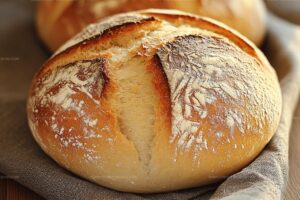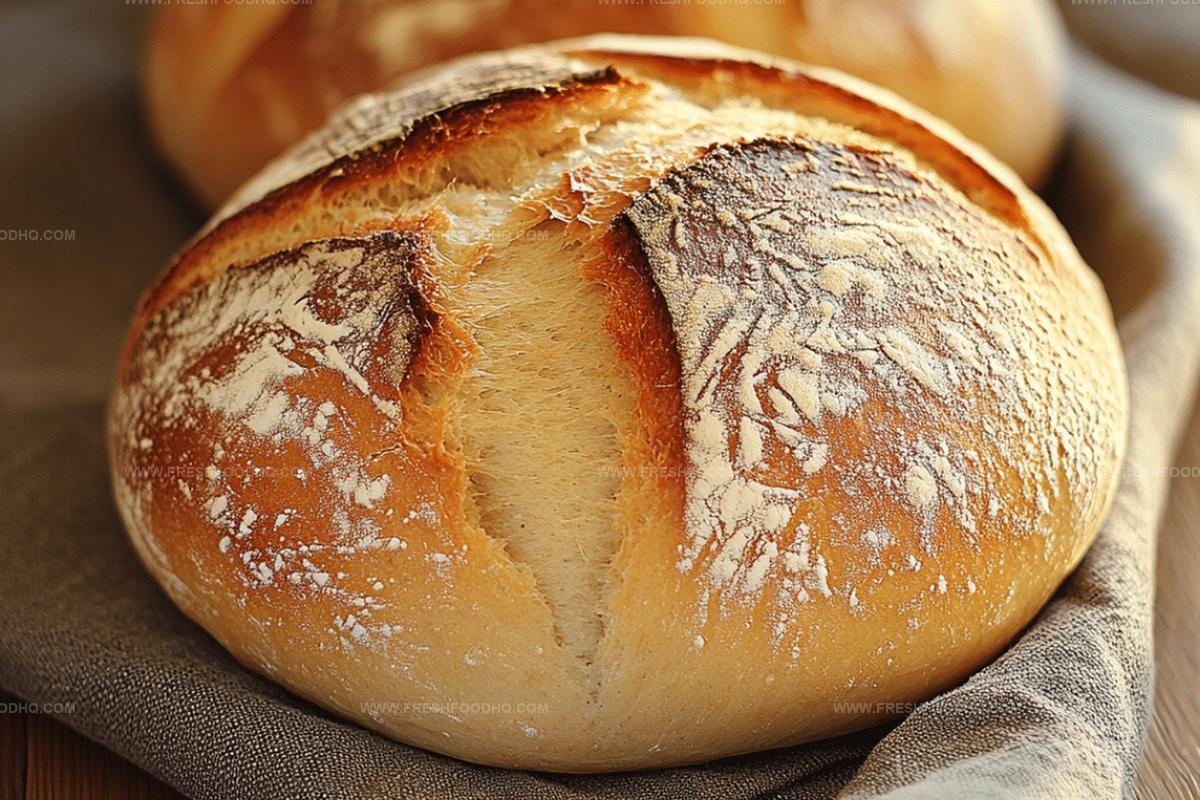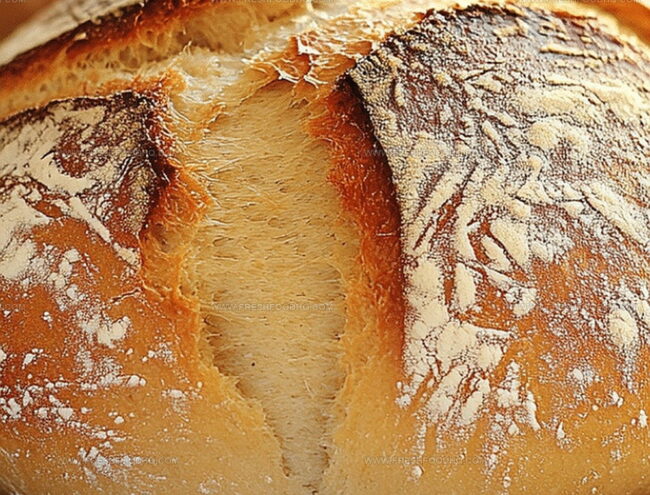The Quickest German Bread Recipe That Tastes Like Home
Crafting a quick german bread recipe brings pure comfort to your kitchen on chilly afternoons.
Delightful aromas will soon fill every corner with warmth and nostalgia.
Crisp crusts and soft interiors promise a delectable experience for anyone seeking authentic flavors.
Simple ingredients come together effortlessly, creating magic with minimal effort.
Home bakers can master this traditional technique without complex steps or specialized equipment.
European bread-making traditions shine through in this straightforward approach.
Let the enticing scent of freshly baked goodness inspire you to start mixing and kneading right now.
Why Quick German Bread Is A Keeper
Ingredients For Quick German Bread
Dry Ingredients:Wet Ingredients:Preparation Ingredients:How To Bake Quick German Bread
Step 1: Blend Dry Ingredients
Grab a spacious mixing bowl and combine flour, instant yeast, granulated sugar, and salt. Whisk these ingredients together until they’re evenly distributed, creating a uniform dry mixture.
Step 2: Create Dough Base
Pour lukewarm water and olive oil into the dry ingredient mixture. Stir with a wooden spoon or spatula, mixing consistently until a soft, shaggy dough starts to form. The texture should be slightly sticky but not overly wet.
Step 3: Knead Bread Mixture
Transfer the dough onto a lightly floured countertop or cutting board. Use your hands to knead the dough, pushing and folding it repeatedly. Continue kneading for approximately 5-7 minutes until the dough becomes smooth, elastic, and less sticky.
Step 4: First Rising Stage
Place the kneaded dough into a lightly greased ceramic or glass bowl. Cover the bowl with a clean kitchen towel or plastic wrap. Let the dough rest in a warm, draft-free spot for 30-45 minutes, allowing it to double in size.
Step 5: Prepare Baking Surface
Preheat the oven to 375°F (190°C). Lightly grease a baking sheet or line it with parchment paper to prevent sticking.
Step 6: Shape Bread Loaf
Gently punch down the risen dough to release air bubbles. Shape the dough into a traditional oval or round loaf, smoothing the surface with your hands.
Step 7: Bake Golden Bread
Transfer the shaped loaf onto the prepared baking sheet. Slide the baking sheet into the preheated oven. Bake for 25-30 minutes, watching for a beautiful golden-brown crust.
Step 8: Cool and Serve
Remove the bread from the oven and place it on a wire cooling rack. Allow the bread to cool completely for about 30-40 minutes before slicing. This helps the interior set and prevents gummy texture.
Helpful Tips For Quick German Bread
Fun Twists On Quick German Bread
What Pairs Well With Quick German Bread
How To Store Quick German Bread
Quick German Bread FAQs
All-purpose flour is ideal, but you can also use bread flour for a slightly chewier texture with more protein content.
Dissolve yeast in warm water with a pinch of sugar. If it becomes foamy and bubbly within 5-10 minutes, your yeast is good to use.
Rising allows yeast to create air pockets, making the bread lighter and developing deeper flavor through fermentation.
Yes! You can easily mix in sunflower seeds, caraway seeds, or dried herbs like rosemary to customize the bread’s flavor.
Print
Quick German Bread Recipe
- Total Time: 60-65 minutes
- Yield: 1 1x
Description
Crusty German bread beckons with rustic charm and hearty flavor, promising a delightful journey through traditional baking. Crisp crust and dense crumb invite you to savor each wholesome slice of authentic German culinary heritage.
Ingredients
Main Ingredients:
- 3 cups (720 ml) all-purpose flour
- 1 cup (240 ml) warm water
Leavening Agent:
- 1 package (2 1/4 teaspoons) active dry yeast
Seasoning and Binding Ingredients:
- 1 tablespoon (15 ml) sugar
- 1 teaspoon (5 ml) salt
- 1 tablespoon (15 ml) vegetable oil
Instructions
- Combine dry ingredients in a spacious mixing vessel, ensuring even distribution of flour, yeast, sugar, and salt.
- Pour warm water and oil into the dry mixture, gently stirring until a cohesive dough emerges.
- Transfer the soft dough onto a lightly dusted surface and work it with rhythmic kneading motions for approximately 5 minutes until achieving a silky, elastic texture.
- Transfer the dough into a lightly greased container, drape with a soft cloth, and allow it to rest and expand in a warm environment for 30 minutes.
- Heat the oven to 375F (190C), preparing for the bread’s transformation.
- Gently mold the risen dough into a rounded or elongated loaf shape, positioning it carefully on a prepared baking sheet.
- Slide the shaped loaf into the preheated oven, baking for 25-30 minutes until the exterior develops a rich, golden-brown crust and releases a tantalizing aroma.
- Remove from the oven and let the bread cool completely on a wire rack, allowing internal steam to settle before slicing.
Notes
- Experiment with different flour types like whole wheat or rye for added nutrition and unique flavor profiles.
- Ensure water temperature is around 110°F (43°C) to activate yeast without killing it, which helps perfect dough rising.
- For a crispier crust, place a shallow pan of water on the bottom oven rack while baking to create steam during the process.
- Consider adding herbs like rosemary or thyme directly into the dough for a more aromatic and sophisticated German bread experience.
- Prep Time: 35 minutes
- Cook Time: 25-30 minutes
- Category: Breakfast, Lunch, Dinner, Snacks
- Method: Baking
- Cuisine: German
Nutrition
- Serving Size: 1
- Calories: 390 kcal
- Sugar: 5 g
- Sodium: 480 mg
- Fat: 4.5 g
- Saturated Fat: 0.6 g
- Unsaturated Fat: 3.9 g
- Trans Fat: 0 g
- Carbohydrates: 80 g
- Fiber: 3 g
- Protein: 10 g
- Cholesterol: 0 mg




Samantha Lee
Recipe Developer & Content Creator
Expertise
Plant-based and vegetarian recipes, Recipe testing and development, Food blogging and digital content creation, Culinary education and workshops
Education
Oregon Culinary Institute (Portland, OR)
Samantha sees cooking like painting, every fresh herb, every juicy tomato, a new splash of color on a canvas.
After graduating from Oregon Culinary Institute, she blended her love of global cuisines and plant-based cooking into recipes that feel fresh, fearless, and full of heart.
Samantha’s kitchen is a place where comfort food gets a modern remix and every meal feels like a little adventure. When she’s not cooking, she’s out exploring farmers’ markets, sketching new recipe ideas, or getting her hands dirty in a community garden.